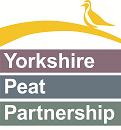Well, it's been a minute, hasn't it? I meant to do this back in 2020 but there was <checks notes> a global pandemic and then after that, things just got in the way. Anyways, here is the final seasonal blog post, which you could read while you listen to the accompanying bogcast of ambient sounds.
Fabulously, I managed to catch some birdsong this time out. In the interests of full disclosure, I've had to tweak the levels on the bogcast so that you can hear some of it. It was definitely there and I definitely heard it but it was not that easy to capture on my 'phone.

